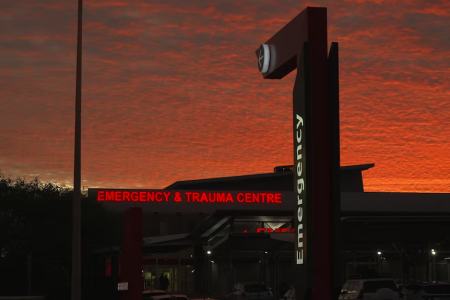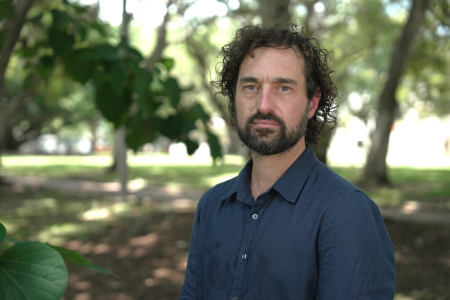Acacia patient record system to go live at Tennant Creek and Alice Springs hospitals despite ongoing safety concerns
By
ABC News
- Replies 0
The Northern Territory government is switching on a controversial patient record system in two hospitals on Saturday, despite the peak body representing doctors labelling it "unsafe".
The Acacia IT project was established in 2017 to integrate four patient record systems into one, but has been plagued with issues, despite the NT government spending more than $300 million on its bungled rollout.
The system was meant to provide frontline staff with more comprehensive patient information and deliver it faster, but was switched off at the NT's largest emergency department after only two months in early 2024.
The switch-off followed pressure from clinicians at Royal Darwin Hospital (RDH), who declared it a threat to patient safety.
During the two months it was operational at RDH, Acacia was incapable of showing each patient's location within an emergency department, unlike similar software systems across the world.
Hospital staff were therefore unaware where the most at-risk patients were.
Basic clinical information was also hard to access.
Acacia is still suspended at RDH's emergency department, but the NT Department of Corporate and Digital Development (DCDD) and NT Health have confirmed it will go live in Alice Springs and Tennant Creek hospitals on Saturday.
"Acacia is on track to be rolled out in the Alice Springs and Tennant Creek hospitals this weekend, including in the emergency departments," both departments said in a joint statement.
Gove and Katherine hospitals have been using Acacia since 2022.
"Acacia was switched off in Royal Darwin Hospital because it was unsafe for patients," Dr Zorbas said.
"Until those same doctors who raised the alarm are happy that the system is now safe, we shouldn't be moving forward with it."
Dr Zorbas said launching Acacia in Alice Springs and Tennant Creek hospitals — which are not as large or as busy as RDH — would see issues "slip under the radar".
"[It] may not demonstrate that the problems that were there when it was withdrawn [from RDH] have been correctly fixed," he said.
"It's easy to just get by ... when you're not full, when you've got time [at smaller hospitals].
"The onus is on DCDD to prove that it's safe, and we need more reassurance in that respect before we can have Acacia returning to service."
NT Health and DCDD said work to address concerns raised by doctors in the RDH emergency department had "been undertaken".
"Re-implementation of Acacia in the Royal Darwin and Palmerston emergency departments is planned for late 2025," they said.
"Acacia continues to be used in all other areas of the Royal Darwin and Palmerston Hospitals."
Budget pressures
The Acacia project is meant to incorporate five stages, although the first stage — rollout at the NT's five hospitals — is still not complete, despite the project's $320 million budget being nearly spent.
The remaining four stages include expanding Acacia's functionality and deploying it to primary care clinics and Aboriginal community-controlled health organisations.
Dr Zorbas said there was "no money" left for Acacia and a return on investment would not be realised if the project was stopped after its first stage.
"It will just be one phase that only covers a very small part of clinical operations," he said.
"The whole point of the program was to extend to five stages."
Exclusive by Jack Hislop
The Acacia IT project was established in 2017 to integrate four patient record systems into one, but has been plagued with issues, despite the NT government spending more than $300 million on its bungled rollout.
The system was meant to provide frontline staff with more comprehensive patient information and deliver it faster, but was switched off at the NT's largest emergency department after only two months in early 2024.
The switch-off followed pressure from clinicians at Royal Darwin Hospital (RDH), who declared it a threat to patient safety.
During the two months it was operational at RDH, Acacia was incapable of showing each patient's location within an emergency department, unlike similar software systems across the world.
Hospital staff were therefore unaware where the most at-risk patients were.
Basic clinical information was also hard to access.
Acacia is still suspended at RDH's emergency department, but the NT Department of Corporate and Digital Development (DCDD) and NT Health have confirmed it will go live in Alice Springs and Tennant Creek hospitals on Saturday.
"Acacia is on track to be rolled out in the Alice Springs and Tennant Creek hospitals this weekend, including in the emergency departments," both departments said in a joint statement.
Gove and Katherine hospitals have been using Acacia since 2022.
AMA against switch-on plan
President of the Australian Medical Association NT John Zorbas said not enough had been done to fix Acacia's issues since it was suspended at RDH's emergency department."Acacia was switched off in Royal Darwin Hospital because it was unsafe for patients," Dr Zorbas said.
"Until those same doctors who raised the alarm are happy that the system is now safe, we shouldn't be moving forward with it."
"[It] may not demonstrate that the problems that were there when it was withdrawn [from RDH] have been correctly fixed," he said.
"It's easy to just get by ... when you're not full, when you've got time [at smaller hospitals].
"The onus is on DCDD to prove that it's safe, and we need more reassurance in that respect before we can have Acacia returning to service."
NT Health and DCDD said work to address concerns raised by doctors in the RDH emergency department had "been undertaken".
"Re-implementation of Acacia in the Royal Darwin and Palmerston emergency departments is planned for late 2025," they said.
"Acacia continues to be used in all other areas of the Royal Darwin and Palmerston Hospitals."
Budget pressures
The Acacia project is meant to incorporate five stages, although the first stage — rollout at the NT's five hospitals — is still not complete, despite the project's $320 million budget being nearly spent.
The remaining four stages include expanding Acacia's functionality and deploying it to primary care clinics and Aboriginal community-controlled health organisations.
Dr Zorbas said there was "no money" left for Acacia and a return on investment would not be realised if the project was stopped after its first stage.
"It will just be one phase that only covers a very small part of clinical operations," he said.
"The whole point of the program was to extend to five stages."
Exclusive by Jack Hislop










